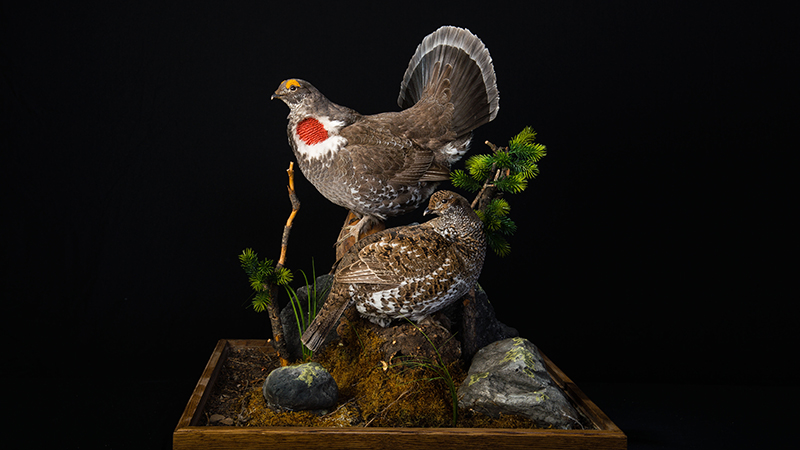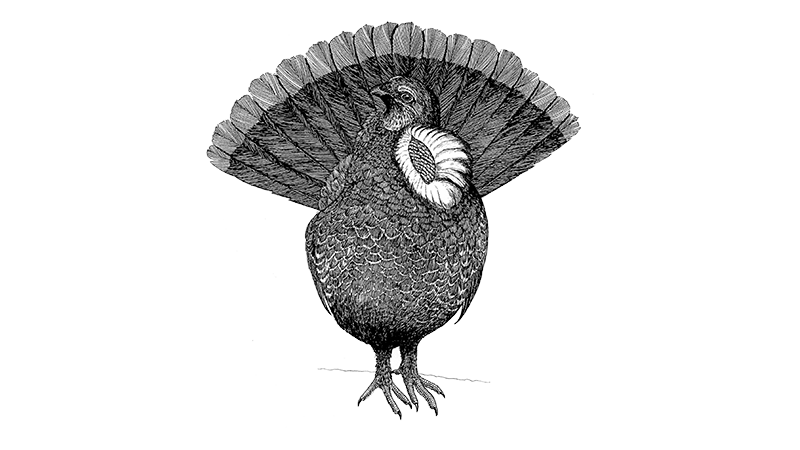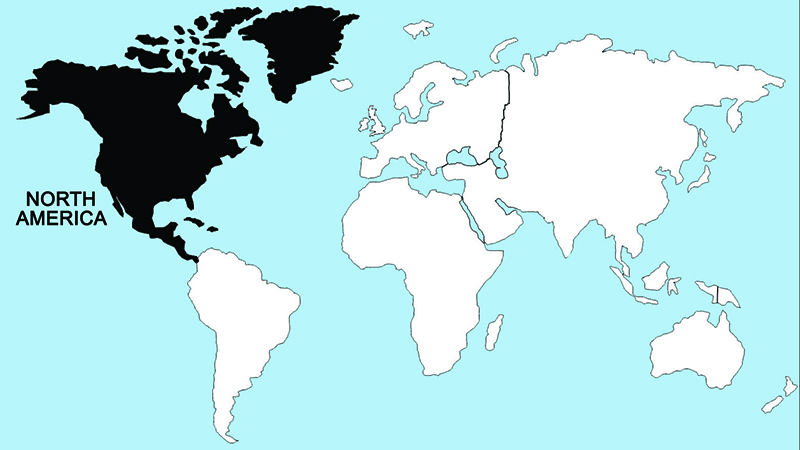Dusky Grouse

The dusky grouse of the Rocky Mountains and the somewhat darker sooty grouse of the Pacific Northwest are very close relatives that are both associated with coniferous forests, and were long regarded as a single species. In early spring males begin to establish hooting territories where there is a combination of fairly heavy cover for escape and relatively open vegetation for display sites. Most hooting occurs in early morning and again in the evening, and serves to attract females that are ready to begin nesting.
Evidently nearly all females, including yearlings, attempt nesting. Nests are built in varied locations, but often are under old logs or among the roots of fallen trees in fairly open timber. Eggs are laid at the rate of two every three days, and 6–8 eggs constitute the normal clutch. The incubation period is 26 days. After hatching, the chicks rapidly become independent. Initially the broods use cover that is largely grasses and non-woody weeds; but as these more open habitats dry up, the birds move into deciduous thickets for the remainder of the brooding period. Gradually the broods break up and the young birds disperse singly or in small groups, slowly working their way upward toward the wintering ranges.

Regions Birds Are Found

Collection Location & Year
U.S. - Montana 1997
Taxonomy
| Order | Galliformes |
|---|---|
| Family | Phasianidae |
| Sub Family | Tetraoninae |
| Species | Dendragapus |
| Genus | obscurus |
Gender
Female & Male
References
- Johnsgard, P. A. 1983. The Grouse of the World. Lincoln, NE: Univ. of Nebraska Press.
- Johnsgard, P. A. 2002. Grassland Grouse and their Conservation. Washington, DC: Smithsonian Inst. Press.
- del Hoyo, J. A. Elliot, and J. Sargatal, eds. 1994. Handbook of Birds of the World. Vol. 2 (New World Vultures to Guineafowl). Barcelona, Spain: Lynx Editions.